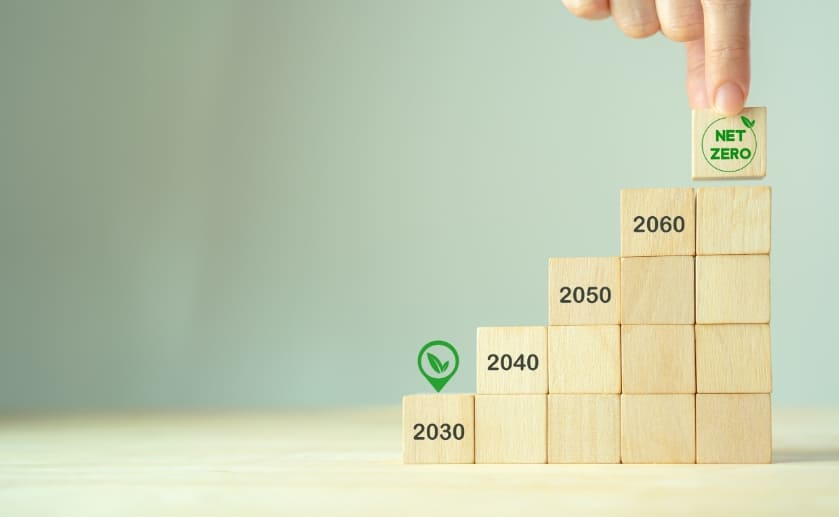How Can Procurement Managers Use Sustainable Packaging to Reduce Carbon Emissions by 2030?

As a procurement manager, you have a crucial role in your company’s sustainability efforts. With India aiming to cut emissions by 45% by 2030, your choices of sustainable packaging can make a real difference.
Sustainable packaging isn’t just a trend—it’s becoming essential for meeting climate goals. By opting for eco-friendly packaging materials and smarter designs, you can help lower your company’s CO2 footprint and reduce waste.
This blog will show you how Moglix Business can help you to adopt sustainable packaging practices that not only cut emissions but also prepare your business for a greener future.
Focus Areas for Packaging Procurement Managers
Principle of sustainable packaging stands on 3 major pillars, which are preventing environmental pollution, enhancing recycled packaging and use of recycled materials, and lowering the CO2 footprint.
As a procurement manager, these are key considerations when making decisions. While many focus on recyclability and using recycled materials, there’s also a growing need to reduce CO2 emissions and prevent waste.
For example, some recyclable materials still have a significant CO2 footprint due to how they’re produced and transported.
It’s important to remember that these goals—reducing waste, improving recyclability, and cutting CO2 emissions—are interconnected.
Interconnected means you can’t have sole focus on one goal without understanding its impact on others can lead to less-than-ideal approach to sustainability goals.
For example, lighter materials may reduce emissions but make recycling more difficult.
Your role is to find the right balance, like how Moglix Business helped a leading e-commerce grocery brand achieve the right balance while transitioning to 100% sustainable packaging.
Procurement Managers Should Lead the Way Towards the Sustainable Packaging
As a procurement manager, you are uniquely positioned in the business value chain to create immediate as well lasting impact on a business or a brand’s effort of shifting towards sustainable packaging.
Here’s how you can lead the shift:
- Look and relook at your Current Packaging: Assess your packaging footprint, including materials, environmental impact, and costs.
Consolidate this data to identify optimization opportunities.
A cross-disciplinary team should manage sustainable packaging efforts, ensuring transparency and guiding eco-friendly packaging solutions.
- Begin with Design: Integrate sustainability into your packaging design by reducing unsustainable materials, selecting eco-friendly solutions, and improving user experience.
Reduce unnecessary packaging, use biodegradable products, and explore innovative sourcing approaches.
- Supplier Strength – Strengthen your supply chain by forming collaborations with packaging suppliers, waste managers, and recyclers to promote sustainability.
Collaborate with end-to-end packaging procurement partners like Moglix Business to get recycled materials, promote closed-loop solutions, and improve recycling operations
- Develop Internal Capabilities: Invest in training and technology to support sustainable packaging. Improve store infrastructure, reverse logistics, and stay updated on regulatory changes.
Cost Myth Associated with Sustainable Packaging
The typical barrier to adopting sustainable packaging, which always costs more.
In reality, investing in capabilities and engaging upstream in the value chain can mitigate these costs.
As per a Mckinsey report optimizing packaging processes and sourcing strategies can cut plastic packaging costs by up to 40%.
Although demand for recycled plastics may exceed supply by 2030, proactive measures can balance the initial premium with long-term savings and efficiency.
Looking Ahead to 2030; The Road to Net Zero Carbon Emission
Sustainable packaging is reshaping the industry. As consumers seek clarity and effective practices, businesses must stay proactive.
Moglix Business has been a key partner in this journey for many procurement managers across industries, offering end-to-end solutions from eco-friendly material sourcing to process optimization.
We help businesses turn sustainability challenges into growth opportunities. Know More about how we can support your sustainable packaging goals.



